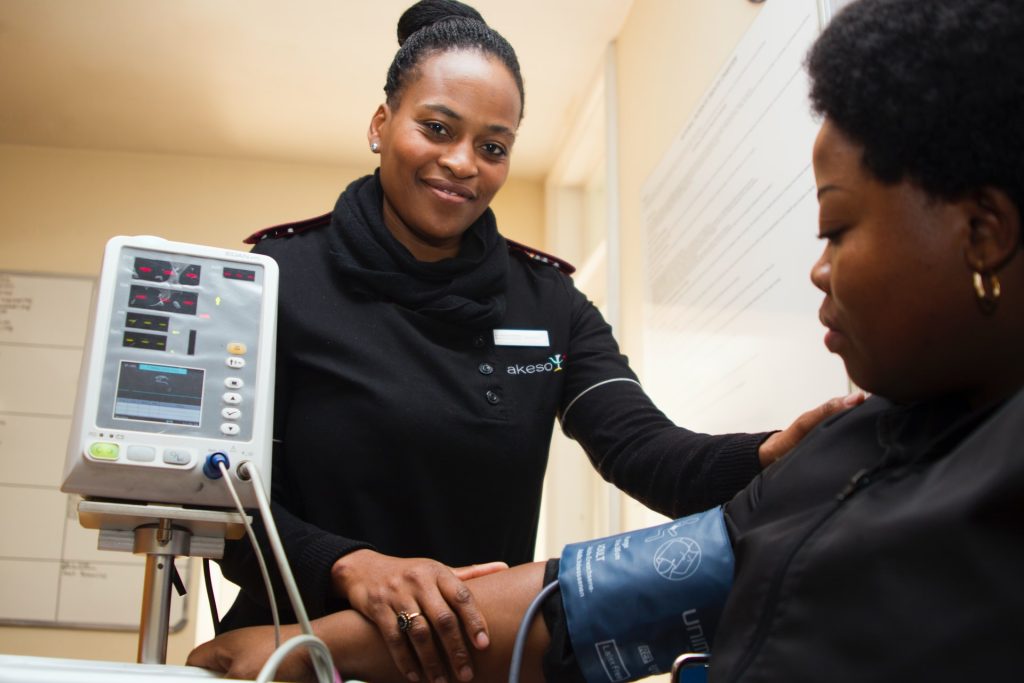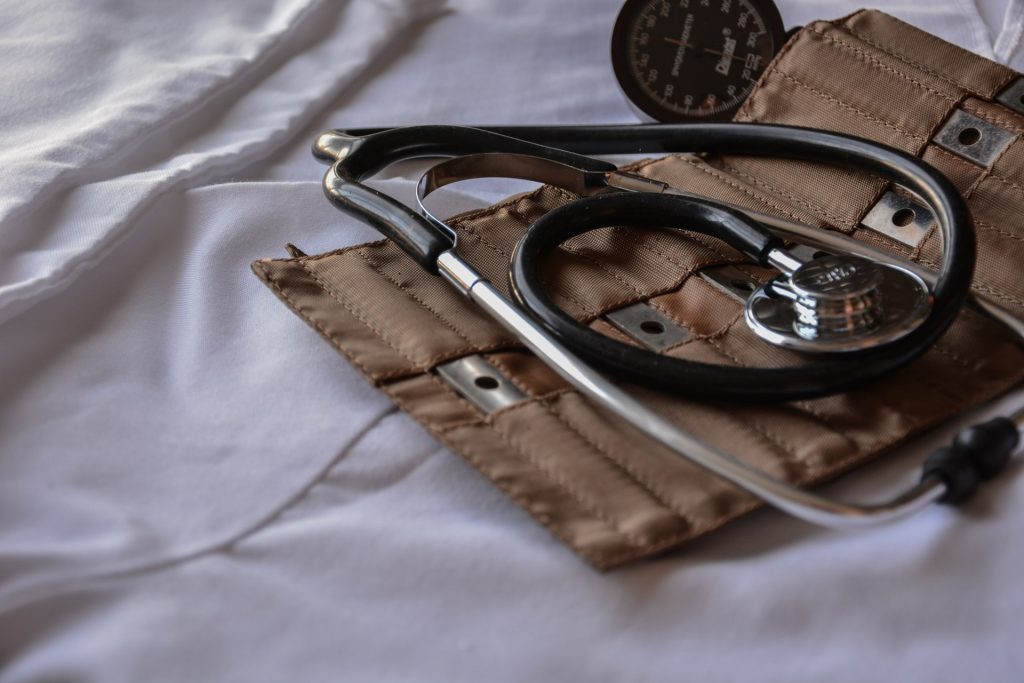Glenda Gray’s Fierce Fight for Science, the COVID-19 Ruckus, and the Bathroom Row about HIV Drugs

By Biénne Huisman
After a decade at the helm of the country’s primary health research funder, Professor Glenda Gray will focus again on doing the science. She tells Spotlight’s Biénne Huisman about her childhood, her passion for research, administering multi-million dollar grants, and a heated argument in the bathroom with an ANC bigwig.
Professor Glenda Gray, the first woman president and chief executive of South Africa’s Medical Research Council (SAMRC), has among others been described as outspoken, credible and tenacious. After a decade at the helm of the SAMRC, Gray retains her reputation for fearlessly speaking truth to power.
“Heading the SAMRC was definitely the best job of my life,” says Gray. “But I am excited about my future, it’s time for another best job. After ten years of doing science administration, it’s time to get back and do the science.”
Perhaps Gray’s fierce spirit was honed in her childhood, growing up in Boksburg on the East Rand, “on the wrong side of the tracks”. She laughs, remembering how American cable news channel ABC sub-titled her first TV interview, due to her strong “East Rand accent”.
Investing in research
From a childhood of counting cents, these days Gray administers multi-million dollar grants and passionately makes the case for greater investment in scientific research.
She says that while South Africa’s health department has competing priorities, ideally it should double or triple its allocation to research.
“We spend a lot of time trying to show the Department of Health how important science is. And so while there is commitment from them, they’re so busy worrying about services; healthcare workers, doctors, hospitals falling down, no equipment, no cancer treatment. And so, sometimes science is seen as esoteric and a luxury.”
Speaking to Spotlight during her lunch break at an SAMRC event in Cape Town, Gray adds: “Science gives you evidence to reduce morbidity and mortality. All the things that change people’s lives; like covid vaccines, ARVs, mother to child transmission interventions, typically these stem from research. And so, you can only improve outcomes if you fund research. Currently, the SAMRC gets around R750 million from government a year; in my view, around R2 to 3 billion a year is needed to really make profound investments in research.”
Supplementing the funding from the government, the SAMRC has scores of international funders and collaborators, such as the United States National Institutes for Health. One concern with such international donor funding is that local research may end up pandering to agendas set abroad.
Gray rejects this suggestion. “We [the SAMRC] always fund the ten most common causes of mortality and morbidity in South Africa. So the funders who work with us have to agree on funding what we deem our priorities.”
One of these priorities is transformation. “So I spent ten years of my life changing who we funded, where we funded, how we funded; changing the demographics of the SAMRC, creating an executive management committee that was diverse, and being able to attract a great black scientist [Professor Ntobeko Ntusi] to take over from me,” says Gray.
While having passed the public mantle onto Ntusi in July, the paediatrician and renowned HIV vaccinologist, named one of Time magazine’s 100 most influential people in 2017, will continue her HIV vaccine research. Gray is heading a major USAID funded study aimed at “galvanising African scientists, mostly women, into discovering and making an HIV vaccine.” She also holds tenure as a distinguished professor at the University of the Witwatersrand’s Infectious Diseases and Oncology Research Institute.
Give and take
Speaking to Spotlight, Gray reflects on managing the political side of the SAMRC – the intersection between politics and science: “As the president of the MRC, you have to be very brave and you have to be able to speak truth to power. Sometimes it’s hard, and sometimes it’s easy.”
This, she says, is a dance of give and take: “The relationship has to be flexible. Because, sometimes scientists are wrong and politicians are right. Sometimes politicians are wrong and scientists are right. And sometimes both are wrong, and sometimes both are right. And our egos can get in the way. You know: ‘Oh, you took me off the MAC [Ministerial Advisory Committee], now I’m not going to help you’. That’s not the right attitude to have…”
COVID-19 lockdown ruckus
Gray served on the Department of Health’s COVID-19 MAC at the height of the pandemic. In May 2020, she caused a ruckus for breaking away from the committee’s more measured counsel, turning to the press to criticise government’s lockdown regulations as “unscientific”.
She said the hard lockdown was causing unemployment and unnecessary hardship and malnourishment in poor families. Later as the hard lockdown started to lift, she spoke out against government’s continuation of restrictions on school going, the sale of certain foods and clothes like open-toe footwear, and the limits on outdoor exercise. “It’s almost as if someone is sucking regulations out of their thumb and implementing rubbish, quite frankly,” she told journalists at the time.
Then health minister Dr Zweli Mkhize rebuked Gray’s claims and sidelined her in the MAC before excluding her from a newly constituted MAC in September. The acting Director-General of Health, Anban Pillay, wrote to the SAMRC board urging them to investigate Gray’s conduct. As the fray deepened, the SAMRC board failed to back Gray. The council’s boardwas was acting in a “sycophantic manner aimed at political appeasement”, lamented a guest editorial published in the South African Medical Journal.
Despite this public falling-out, the following year, in February 2021, Gray worked with Mkhize to bring vaccines to South Africa’s healthcare workers.
“So basically at that stage government didn’t have a vaccine programme, and I bailed them out,” she tells Spotlight.
In February 2021, results from a clinical trial showed that the Oxford AstraZeneca COVID-19 vaccine – then intended for rollout in South Africa – performed poorly in preventing mild to moderate illness caused by the Beta variant of SARS-CoV-2, which was dominant at the time.
Gray says she was approached by Mkhize about an alternative vaccine – to which she responded by facilitating the procurement of 500 000 doses of the Johnson & Johnson vaccine through personal connections. These were officially rolled out to healthcare workers on February 17, when President Cyril Ramaphosa received his jab at the Khayelitsha District Hospital. Spotlight previously reported in more detail on the procurement of those first 500 000 doses.
“The vaccines arrived in Johannesburg at about midnight,” Gray recalls. “Then the plane with the president’s vaccine touched down in Cape Town at 12:20pm; and we had to rush it to Khayelitsha to have him vaccinated at one o’clock”.
A bathroom row with a minister
Gray is no stranger to fighting for policies and treatments based on scientific evidence. She recalls an altercation with former health minister Nkosazana Dlamini-Zuma in a bathroom at the presidential residence in Pretoria (Mahlamba Ndlopfu) in the late 1990s – the era of AIDS-denialism under then President Thabo Mbeki.
“Thabo Mbeki had a national AIDS plan and they were about to publish it. So there was a meeting; we were presenting, and we had data that mother to child transmission interventions were affordable, or that it was actually cheaper to give ARVs to a pregnant woman, than to treat a child who is HIV positive. But they kept on saying it was unaffordable, and that they wouldn’t be doing it. And then, when I saw Dlamini-Zuma in the bathroom, I got into a fight with her and said: ‘but it is affordable!’”
Early years in Boksburg
One of six children born to a “maverick father”, whip-smart but taken to getting involved in crazy schemes, and a mother who later in life became a Baptist minister, Gray says they grew up poor.
“My parents would often run out of money in the middle of the month, having to scrounge for food, borrow milk or buy on the book (credit arrangements). So I know what it’s like to be on the other side of privilege.”
Gray relays how neighbours would drop by at her childhood home to borrow cups of sugar, to spy on their family – as, during apartheid, her father would entertain friends of colour.
Gray matriculated from Boksburg High School in 1980. The next year she enrolled for medical school at Wits, working part-time to pay her way: “I worked at an ABC shoe store, Joshua Door, selling furniture, making Irish coffees at Ster Kinekor, waitressing…”
In 1993, as HIV exploded across the country; pregnant with her first child, Gray watched her own stomach expand while treating HIV-positive expectant mothers at Chris Hani Baragwanath Hospital. “In those days, there were no ARVs for children,” she recalls. “And so women had to navigate this joy of a new life, with the fact that death was looming over them.”
Today, Gray has three children and lives in Kenilworth in Cape Town.
Commenting on her reputation for standing up to pressure, she smiles. “My tongue has gotten me into trouble. How do I feel about that? I just want to make sure that as scientists we let politicians and society know the data and the evidence. I feel passionate about translating science, I feel passionate about evidence. I feel passionate about science changing the world.”
Republished from Spotlight under a Creative Commons licence.







